by Graham Robson
By 1965 I had settled into my dream job at Britain’s Autocar magazine, ready to drive new cars, describe technical developments, and to report on the most prestigious International rallies in Europe. Nothing, it seemed, could now surprise me—or could it?
I was wrong. When the phone rang from BMC’s ‘works’ competitions department at Abingdon, I was quite unprepared for what came next. Wilson McComb, who was the department’s Press Officer, suddenly made this most amazing offer:
“The Morley Twins have just come back from the French Alpine Rally in their Big Healey, where they won their class and took second overall in the entire GT Category. The car is standing outside in the yard right now, and we don’t have any immediate work for it to do. Would you like to drive it for a week?”
I won’t say that I dropped the phone in my excitement, but for sure I concluded the deal before telling technical editor Geoffrey Howard what was brewing. In the end it was Geoffrey who hogged the by-lines in the issue of September 1965, but it was me who did most of the driving.
It all started at the Autocar London offices, just south of the Thames and close to Waterloo railroad station. Although BMC had given the car (DRX 258C) a wash after it got back from France, it still had a slightly crumpled left side rear fender, and the interior had a goodly supply of Dauphinois dust covering everything. Although the competition number had been removed (No. 137—thank you for asking), the array of five extra driving lamps, and the big competition number patches on the doors were still in place and, well, it could never be mistaken for an ordinary Austin-Healey 3000 in any way.
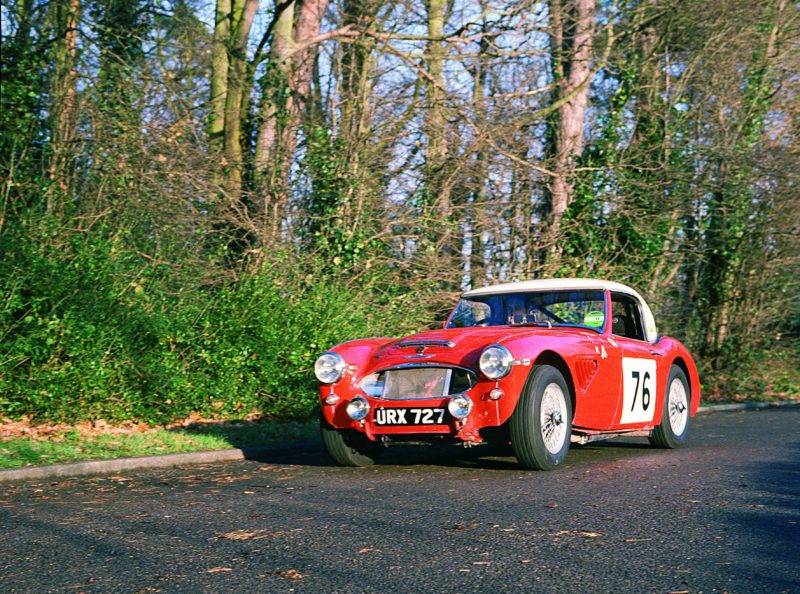
Think of what happened next. I had the delightful job of threading the rally car out of London, rushing up the M1 motorway, and getting home, near Coventry that afternoon, because we intended to take performance figures at the industry’s proving grounds (MIRA—near Nuneaton) the following day. Those were the days when I lived in a mundane suburban district, where the Healey had to be parked outside—and, as I recall, that night it had to share space, at home, with a Triumph Vitesse Convertible, which was also MIRA-bound in the next few days.
Those were the days in which our regular wriggle north out of London from the office was to sweep past Buckingham Palace, skirt Regent’s Park, wave at the Lord’s Cricket Ground on our way past it, and link up with the M1 near its terminus near Hendon. After that, M1 had three traffic lanes—and in those heady days, no speed limits!
Which was all well-and-good, but consider the challenge of taking a grumbling, throbbing, and occasionally a bellowing rally car through the heavy traffic in Westminster. The Healey didn’t have the sort of clutch which was meant to enjoy that sort of progress. I worried about an overheating engine (which never happened), and often had to be nice to suicidal drivers of London black cabs, delivery panel trucks or—yes, I’ll admit it—double decker buses.
Somehow, though, I made it and was soon ready to settle down to a 90-100mph cruise on the motorway. If, that is, there had not already been a long stream of machinery all ready to exercise their rights to get in my way. No matter. As I would also find a year or two later when driving a road-going Ford GT40 on this stretch—one glimpse in their rear view mirror, followed by the receipt of a blinding flash from high-wattage auxiliary lamps, always did the trick. No one, as far as I could see, wanted to play racer against such an obviously purposeful machine, and that 60-mile stretch of highway seemed to end in a flash.
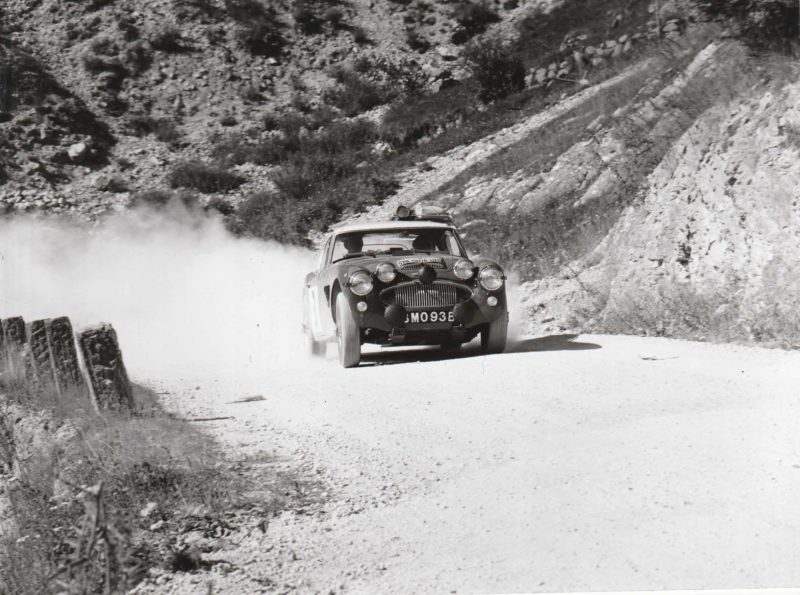
There was one handicap, however. In heavy traffic, at either end of the trip, there was the noise. Ah yes, the noise. Music to the ears of all we motor sport fanatics, but to the more sensitive ears…? This brand of fully developed Austin-Healey had an exhaust system which terminated in the tail pipes exiting under the left-side passenger doors. This is the kerbside in the UK, therefore… sitting at traffic lights, or in jams, these pipes would burble along, rather like the sound made by an old-type bath tub emptying, but the three twin-choke Weber carburetors, also at the same side of the car, but under the hood, would be silent. Then, if the driver gave the engine a quick blip to clear its throat before setting off again, all that would change, for the Webers would begin to gobble, the tail pipes would splutter into Basso-Profundo life, which would soon progress to a howl as peak revs were approached. Along with all this, it handled like no other Big Healey I had ever driven before this. Could any enthusiast have asked for more?
Colleague Howard, allowed space in the magazine to drool over what he later experienced, had this to say:
“But it is in its feel—that indefinable sense transmitted to the driver by inanimate mechanicals—that this car differs most from its production original… With a flood of light boring a tunnel for miles ahead there is no need to reduce speed after dark. Thundering between hedges and grass banks, one is forever at work: up through the gears, lift off for a curve, back on the throttle, into overdrive then out again, hard on the brakes for a sudden hazard, back on the throttle—that’s the way it goes…”
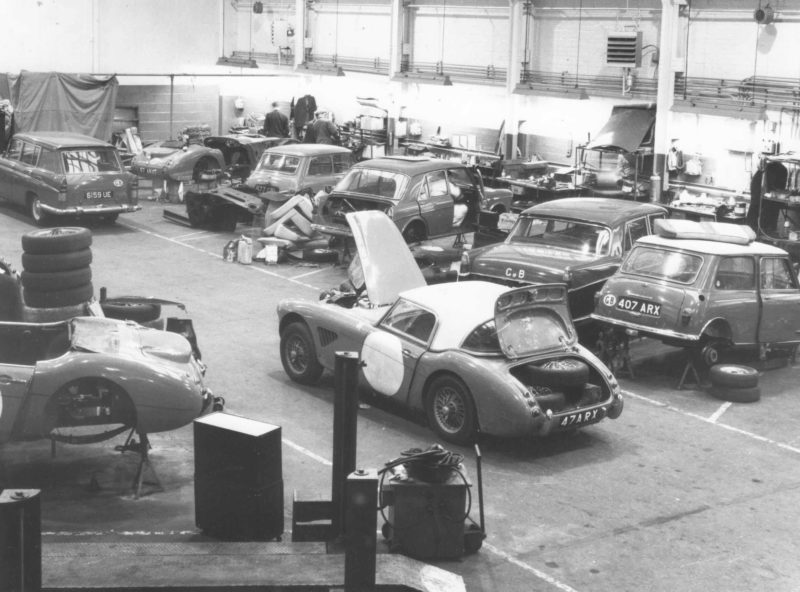
I, on the other hand, not only had the joy of using the car for commuting to the office, ten miles away in Coventry, but for several days became familiar with the other joyous details of such a unique car: the special seats, the overdrive switch on the top of the gear stick, for instance, the safety belts which were still rarities in 1965, the navigation equipment ahead of my passenger’s eyes, and the need to keep cool in a cabin which seemed to gather all—and I do mean all—of the spare warm air from the engine bay without being asked!
Oh yes, and the need to master the routine of starting up this beast from cold. With three twin-choke Webers, an aluminium cylinder head, a high compression ratio, and no choke control to help, this was never going to be easy to ease the 3-litre engine into life. As colleague Howard later commented: “There is no choke, so it is the usual technique of pumping the accelerator for six squirts of neat petrol to flood the inlets.” What he did not admit was that this method didn’t always work at first, the Webers would spit and sulk, and would refuse to fire up. Happily, a second attempt usually worked out just fine, and a tow start was never needed.
This is no place to ramble on about performance figures, or other such superlatives, except to say that for rallying, this machine had been fitted with a low axle ratio (of 4.3:1), the engine would rev freely to 6,000rpm (which, we were told, we must not, under pain of death, take it over that), but the joy was to find that if we took the trouble to keep the revs to more than about 4,000rpm, there always seemed to be a gear ratio—one of six, of course—for every occasion.
It was so easy, however, to fall into the trap of thinking that all other drivers had cars with a similar potential, and to get slightly irritated if they did not seem to want to go as quickly, or revel so easily in small opportunities. It was my dear wife—and I was not trying to make a point—who suffered most on the day when I took the car back to BMC at Abingdon. Pointing it down country highways through the Cotswolds, I instructed her to follow me, in my own personal car, which was a quite-quick-for-its-day Ford Cortina GT. Before we reached Abingdon, I pulled over to brief her about the arrival procedure to find her in floods of tears. “Never,” she cried, “make me drive as fast as that again! I’m frightened by those speeds.” And I wasn’t even trying. MM




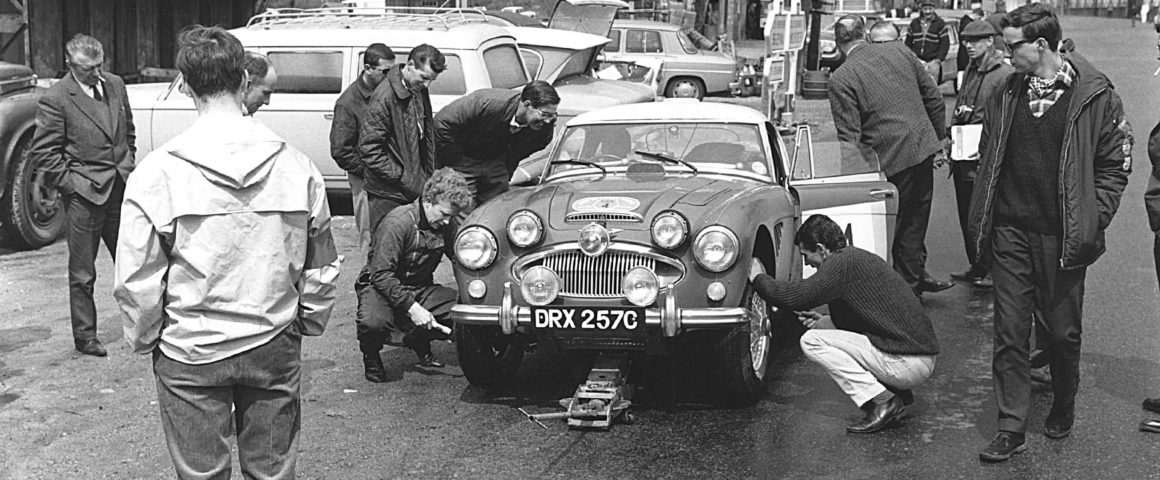

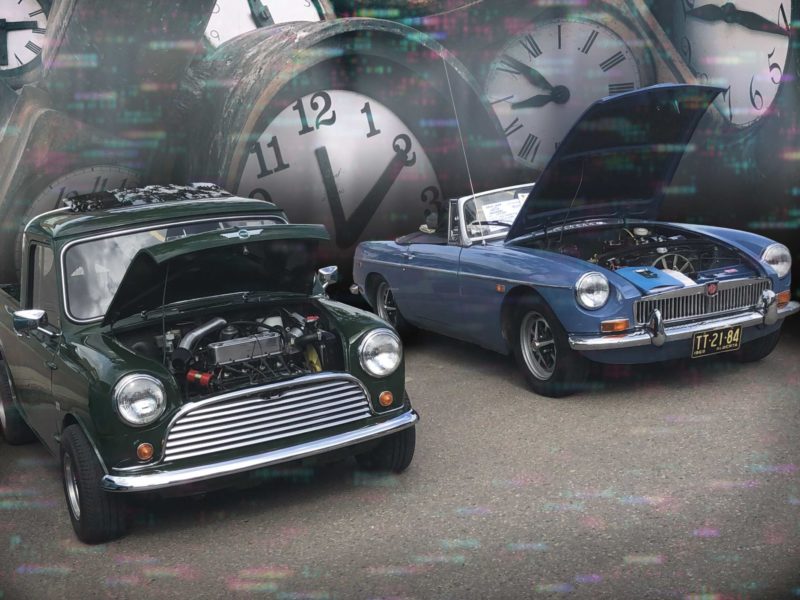

'Taming the Beast' have 2 comments
September 28, 2021 @ 9:50 pm Malcolm Grey
Covid Spitfire ! I enjoyed the picture of the old Spitfires gathering dust and awaiting enthusiastic saviors
Almost 50 years ago, back in the UK, I upgraded from a used ’65 Triumph Spitfire MkII (like the third one along) to a new MkIV model.
That was long before the 4 kids came along and quite a while before I came to live in Texas. I am now in the process of restoring a ’76 Spitfire 1500. (Like the white one,. but worse)
My challenge is a long neglected, non running “barn find” that was last licensed in 2001! It is my Covid and Retirement project in one, and it will be completely stripped down before restoring to its former glory. I expect to be tinkering with this through many more surges of this pandemic.
Show some love and go find yourself an old Spitfire, It is probably one of the easiest vehicles to work on, You can almost walk around in the engine bay. Parts are available there are loads of “how to” videos on YouTube and best of all there is no fancy electronics to mess with
January 30, 2022 @ 11:16 pm Ryan Mark
Lovely read. Thanks for sharing.